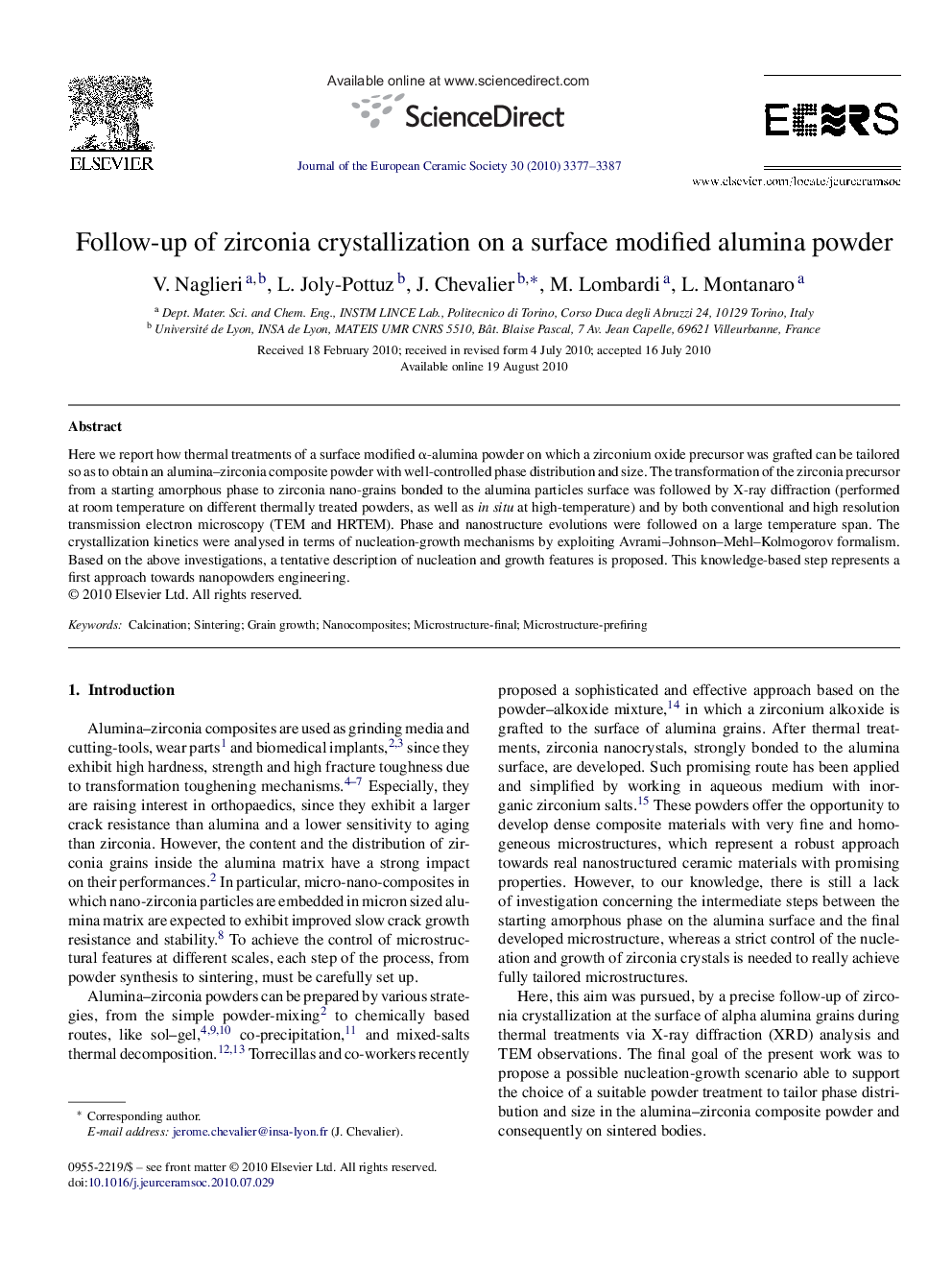| Article ID | Journal | Published Year | Pages | File Type |
|---|---|---|---|---|
| 1476141 | Journal of the European Ceramic Society | 2010 | 11 Pages |
Here we report how thermal treatments of a surface modified α-alumina powder on which a zirconium oxide precursor was grafted can be tailored so as to obtain an alumina–zirconia composite powder with well-controlled phase distribution and size. The transformation of the zirconia precursor from a starting amorphous phase to zirconia nano-grains bonded to the alumina particles surface was followed by X-ray diffraction (performed at room temperature on different thermally treated powders, as well as in situ at high-temperature) and by both conventional and high resolution transmission electron microscopy (TEM and HRTEM). Phase and nanostructure evolutions were followed on a large temperature span. The crystallization kinetics were analysed in terms of nucleation-growth mechanisms by exploiting Avrami–Johnson–Mehl–Kolmogorov formalism. Based on the above investigations, a tentative description of nucleation and growth features is proposed. This knowledge-based step represents a first approach towards nanopowders engineering.
